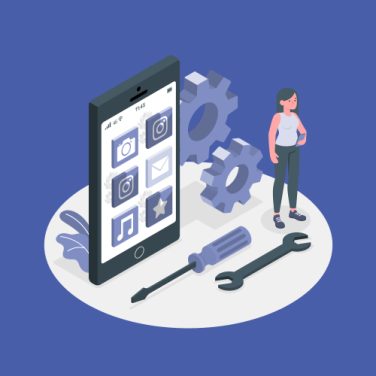Human Capital Management (HCM) represents an integrated approach to recruiting, managing, developing, and optimising an organisation’s workforce.
At its core, HCM software automates and unifies essential HR functions—payroll, time and attendance, talent acquisition, performance management, learning and development, and analytics—into a single platform.
This consolidation accelerates administrative tasks and empowers HR teams with data-driven insights.
Evolution of HR technology
Early HR information systems (HRIS) offered basic employee data storage and manual payroll calculation. Over time, specialised modules for recruiting, learning management systems (LMS), and performance reviews emerged. Today’s HCM suites leverage artificial intelligence and people analytics to:
- Automate payroll calculations across multiple currencies and tax jurisdictions
- Deliver real-time dashboards for headcount, turnover, and labour costs
- Predict attrition risks and identify high-potential talent through AI-driven models
- Enable mobile self-service for leave requests, time tracking, and benefits enrolment
Businesses of all sizes—from 10-employee startups to 3,500+ workforce enterprises—invest in HCM solutions to streamline processes and improve compliance. Cloud-native delivery provides automatic updates for local labour laws, reducing legal risk and ensuring continuous adherence to changing regulations.
Core benefits of integrated HCM software
- Scalability: Modular architecture allows incremental deployment of payroll, talent management, and analytics.
- Efficiency: Automated workflows free HR professionals from manual tasks, improving overall productivity.
- Compliance: Built-in tax engines and regulatory trackers ensure accurate payroll and benefits administration across jurisdictions.
- Insights: Centralised data and predictive analytics enable strategic workforce planning and succession management.
In practice, leading solutions like those offered by MiHCM map to each organisational need.
MiHCM Lite handles payroll and attendance for small teams; MiHCM Enterprise adds talent and performance modules; MiHCM Data & AI delivers advanced analytics; MiA provides conversational AI support; SmartAssist automates approvals and notifications.
Scenario 1: Automated payroll processing

Organisations processing payroll manually face calculation errors, delayed payouts, and compliance risks. Multi-country operations amplify complexity: fluctuating tax rules, overtime legislation, and currency conversions demand precision. A manual approach often results in late payments, penalties, and unhappy employees.
MiHCM solutions feature a global payroll engine designed for multi-currency, multi-country payroll processing. Key capabilities include:
- Automated tax rule application: Country-specific tax tables update automatically with local regulations.
- Currency conversion: Real-time rates ensure accurate gross-to-net calculations.
- Pay-run scheduling: Configurable calendars trigger payroll events based on region.
- Self-service payslips: Secure employee portals deliver digital pay statements.
Implementation steps
- Data migration: Import legacy payroll, employee master, and compensation data via secure CSV or API.
- Configuration: Set country-specific tax rules, pay calendars, and pay components.
- Testing: Run parallel payrolls for one or two cycles to validate calculations and legal compliance.
- Go-live: Activate automated schedules and archive legacy processes.
ROI and impact
A typical deployment delivers:
- 60% reduction in payroll processing time
- 0.2% error rate compared to 3–5% manually
- Elimination of late payment penalties in 95% of cases
- Enhanced employee satisfaction via transparent pay portals
Scenario 2: 360° Performance reviews
Holistic performance review programmes capture feedback from multiple perspectives: peers, managers, self-assessments, and direct reports. Manual review cycles rely on emails and spreadsheets, leading to missed deadlines, inconsistent scoring, and limited visibility into competency gaps.
MiHCM Enterprise’s workflow builder centralises review cycles, automates reminders, and enforces evaluation templates aligned with company competencies. Features include:
- Pre-built templates for leadership, technical, and functional reviews
- Automated notifications to reviewers and participants
- Custom rating scales that map to organisational competency frameworks
- Integrated calibration tools to ensure consistent scoring across teams
Configuring multi-rater feedback workflows
- Select participants: Define review groups based on hierarchy, project teams, or custom criteria.
- Customise templates: Adjust rating scales, competencies, and open-ended questions.
- Set schedules: Automate launch dates, deadline reminders, and closure events.
- Enable calibration: Assign HR or leadership groups to review and normalise ratings.
By adopting 360° reviews, organisations typically see:
- 35% faster cycle completion compared to manual processes
- Improved feedback quality scores (survey ratings up by 25%)
- Greater alignment between individual goals and organisational objectives
- Actionable insights for training, coaching, and succession planning
Automated workflows transform performance management from administrative burden to strategic driver, unlocking continuous improvement and engagement.
Scenario 3: Succession planning in growing firms
As companies expand, identifying critical roles and preparing successors becomes vital. Unplanned vacancies in leadership or niche positions can disrupt operations and strategic initiatives. Traditional succession planning often lives in spreadsheets, making visibility and risk assessment difficult.
MiHCM Data & AI talent pool analytics leverages skills intelligence and competency data to highlight candidate readiness and risk levels. Key capabilities include:
- Role criticality mapping: Identify roles with high business impact and risk.
- Succession bench analysis: Score internal candidates based on skills match and readiness timelines.
- Development plan integration: Track learning interventions and milestone completions.
- Risk heat maps: Visualise potential talent gaps across departments or geographies.
Successful implementations follow these steps:
- Define critical roles: Collaborate with leadership to list positions vital to strategy and operations.
- Assess internal talent: Use competency assessments and AI-driven profiles to rank potential successors.
- Create development plans: Assign courses, stretch assignments, and mentorship within SmartAssist.
- Monitor progress: Review readiness metrics and adjust plans quarterly via dashboard.
Outcome metrics demonstrate:
- 50% reduction in bench strength gaps year-over-year
- 30% faster placement of employees into leadership roles
- Increased internal hire rate for key positions (from 20% to 45%)
By combining predictive analytics with structured development plans, growing firms mitigate risk and build a sustainable leadership pipeline.
Industry spotlights: Tech, retail, and healthcare
Different industries present unique workforce challenges. MiHCM modules adapt to sector-specific regulations and operational models.
| Industry | Key Challenges | MiHCM Solution |
|---|---|---|
| Technology | Rapid scaling, remote workforce management, geofencing | Mobile time tracking, geolocation validation, automated onboarding workflows |
| Retail | Shift scheduling complexity, seasonal hiring surges, high turnover | Automated shift templates, self-service swap, volume onboarding via MiA chatbot |
| Healthcare | Credential tracking, compliance reporting, variable PTO rules | Centralised credential expiry alerts, audit-ready compliance dashboards, flexible leave policies |
Tech companies leverage the mobile app for on-the-go attendance and integrate geofencing to verify remote work.
Retail organisations streamline high-volume hiring through MiA chatbot-driven candidate engagement and optimise scheduling for 24/7 operations.
Healthcare providers require robust credential tracking—MiHCM’s compliance reports automatically flag expirations and audit trails.
Across industries, businesses experience:
- 35% faster time-to-hire in tech and retail
- 25% reduction in compliance audit findings in healthcare
- 50% decrease in manual scheduling errors
- Continuous legal compliance for global and local regulations
How small businesses use HCM solutions

Small businesses benefit from simplified HR processes without a large administrative overhead. MiHCM Lite serves organisations up to 250 employees by focusing on essential functions:
- Automated payroll & compliance: Built-in tax and labour law updates prevent local fines.
- Time & attendance: Mobile clock-in/out with geolocation safeguards.
- Employee self-service: Portal for payslip access, leave requests, and personal data edits.
- Minimal IT support: Cloud deployment eliminates on-premise maintenance.
Key outcomes for small businesses:
- 30% reduction in HR administrative overhead
- Fewer than 5 helpdesk tickets per month after self-service rollout
- Zero payroll errors in 12 consecutive pay cycles
- Enhanced employee satisfaction through transparent processes
By consolidating core HR and payroll in one platform, small enterprises free up resources to focus on growth and customer engagement rather than manual processes.
How enterprises leverage HCM for talent management
Large organisations require comprehensive solutions to manage complex hierarchies and global workforces. MiHCM’s digital HR assistant MiA’s conversational AI chatbot streamlines candidate queries and internal HR support by:
- Answering FAQs on benefits, policies, and onboarding steps
- Guiding hiring managers through requisition workflows
- Automating interview scheduling and reminders
Enterprises also utilise dynamic organisational charts for real-time structure visualisation and workforce planning. Predictive analytics anticipate attrition by analysing engagement scores, performance trends, and external labour market data.
Standardised global processes with built-in local compliance ensure consistency across regions. Core capabilities include:
- Integrated talent acquisition with configurable approval chains
- Succession planning dashboards highlighting skill gaps
- Automated performance calibration and calibration event tracking
Outcomes observed:
- 50% improvement in time-to-hire for critical roles
- 20% reduction in voluntary turnover year-over-year
- Consistent compliance across 15+ operating countries
Enterprises realise strategic benefits by unifying HR, IT, and finance on one HCM platform—eliminating data silos and enhancing decision speed by 3×.
Measurable Benefits of HCM Software
Organisations deploying integrated HCM software report significant performance improvements. Key metrics include:
- Up to 70% faster payroll processing and 95% accuracy, eliminating manual calculation errors.
- 50% improvement in time-to-hire and enhanced candidate experience via automated recruitment workflows.
- 40% reduction in compliance risk and fines through continuous regulatory updates.
- 30% increase in employee engagement scores driven by self-service and continuous feedback tools.
- Data-driven decision speed increased by 3× using real-time dashboards and predictive analytics.
These outcomes deliver measurable ROI and validate investment in HCM solutions. Companies gain:
- Reduced administrative costs
- Improved workforce productivity
- Enhanced talent retention
- Scalable processes that adapt to growth
By tracking these metrics, HR leaders demonstrate the strategic value of HCM software examples and the tangible HCM software benefits they deliver.
How to choose the right HCM system
Selecting an HCM platform requires careful evaluation of business needs, growth plans, and integration requirements. Consider the following criteria:
| Evaluation Criteria | Key Questions | MiHCM Capabilities |
|---|---|---|
| Core Requirements | Payroll, talent management, analytics, mobile access? | Modular suite: Lite, Enterprise, Data & AI, MiA, SmartAssist |
| Scalability | How will headcount and geography expand? | Cloud-native architecture scales seamlessly |
| Integration | ERP, finance, collaboration tools compatibility? | Open APIs and pre-built connectors |
| User Experience | Employee self-service, mobile usability? | Intuitive UI and mobile apps for iOS/Android |
| Support & Security | Vendor SLAs, encryption, compliance certifications? | 24/7 support, SOC 2 and ISO 27001 certified |
Begin with a detailed requirements workshop, engage stakeholders from HR, IT, and finance, and conduct vendor demonstrations. Score each system on a weighted matrix to ensure alignment with strategic goals and operational needs.
Choosing the right HCM system unlocks process efficiency, compliance confidence, and data-driven talent strategies.
The role of AI in modern HCM
Artificial Intelligence has become integral to contemporary HCM platforms. Core AI-driven capabilities include:
- Conversational AI: Real-time employee support for onboarding, benefits queries, and policy guidance via chatbot.
- Predictive analytics: Models that forecast turnover risk, high-performer potential, and hiring needs.
- Automated compliance monitoring: AI agents track regulation changes and update policies automatically.
- Augmented workflows: Contextual task recommendations—such as reminding a manager to complete a review or flagging training gaps.
Implementing AI in HCM:
- Identify use cases: Prioritise areas like recruitment triage, performance risk alerts, or compliance tracking.
- Data preparation: Ensure clean master employee data and standardised competency frameworks.
- Configure AI rules: Set thresholds for alerts (e.g., 20% attrition risk) and define escalation paths.
- Monitor and adjust: Review AI-driven insights for accuracy and refine models quarterly.
AI-powered HCM transforms reactive HR into proactive people management, improving retention, engagement, and operational agility.



